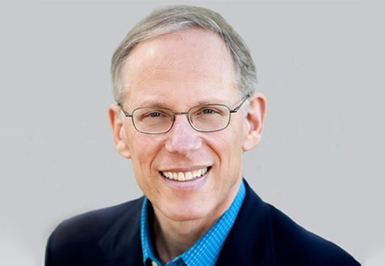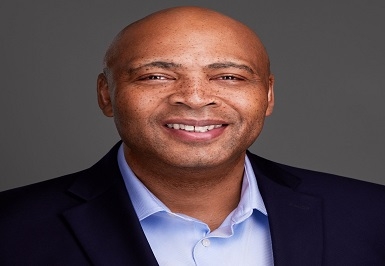Even in a tough 2020 Black college alumni again topped US hiring trend
 George Anders
George AndersEveryone is scurrying to connect with Harold Bell these days. He’s the director of career planning and development at Spelman College, one of the best-known of the United States’ 105 historically Black colleges and universities (HBCUs).
Big banks recruit from Spelman. So do leading tech firms, consulting firms, grad schools, the State Department and more. At a virtual event a few months ago, 137 organizations crowded into a group call that Bell organized, clamoring for a chance to talk to the eight Spelman students in attendance.
“We’re grateful,” Bell last week told 65 employers attending another jammed virtual event. We don’t want you to stop.” Still, he cautioned that recruiter appetite now stretches far beyond Spelman’s annual graduating class of about 500 seniors. His advice: “You should be considering other HBCUs, too.”
Quietly, HBCUs and their alumni have emerged as stars in the never-ending U.S. hunt for talent. During the past five years, the hiring-rate trend for alumni of the 105 HBCUs has consistently outpaced similar data for overall LinkedIn U.S. membership.
As the chart above shows, the hiring rate for HBCU graduates climbed an average 5.9% a year during the strong job markets of 2016 through 2019. That was well ahead of the 1.3% average growth rate for bachelor’s degree holders from non-HBCU schools, according to LinkedIn’s Economic Graph team.
Last year, U.S. hiring trends turned negative across the board, as the COVID-19 pandemic jolted the entire economy. But HBCU alumni showed above average resilience, with a hiring rate decline of just 11.9%, compared with 16.2% for all U.S. LinkedIn members.
Many HBCUs were formed in the late 1800s in Southern or border states as a way of providing higher education to Black citizens in the face of racial discrimination that closed off access to other schools.
Today, Black students still are 85% or more of the student body at most HBCUs. But lower percentages exist, too. The federal College Scorecard identifies 62% of Kentucky State’s student body as Black, along with 18% white, 9% other races and 10% unknown.
Where are HBCU graduates most likely to be working? For a comprehensive look, check out the interactive graphic above. Two standout opportunities are the education sector (16% of HBCU alumni, as tracked by LinkedIn, vs. 12% for overall U.S. members) and public administration (6.3% vs. 3.2%.)
Many HBCUs started as teacher-training institutions more than a century ago. While their focus has expanded greatly, they remain a prime destination for people aspiring to careers in education. At Alabama State University, for example, LinkedIn data on the 15 most common employers for alumni includes the school systems of Birmingham, Ala., Montgomery County, Ala., Atlanta and Mobile County, Ala.
In fields such as corporate services, healthcare and wellness or fitness, the LinkedIn analysis found essentially the same participation rates for both HBCU graduates and the overall population.
In three sectors, however, HBCU graduates have been under-represented. These are software and information technology (6.2% for HBCUs vs. 8.5% for all U.S.), finance (7.4% vs. 9.5%), and manufacturing (5.6% vs. 7.3%).
Glen D. Spencer Jr., a tech executive who earned a doctorate in education from the University of Georgia in 2019, pointed out in his dissertation that HBCUs account for nearly 30% of the bachelor’s degrees earned by Black graduates nationwide in science, technology, engineering and math (STEM). Standouts have included Grambling State in computer science, North Carolina A&T State in engineering and Xavier University of Louisiana in biomedical science.
Even so, Spencer wrote: “academic success was not enough for underrepresented minority students interested in a STEM career. . . Students believed that in addition to having the academic credentials, they needed to participate in a HBCU-industry partnership program to get a shot at starting a career in a STEM-related field.”
At Spelman, career services chief Harold Bell makes a similar point. Big-company interest in Spelman intensified after Black Minneapolis resident George Floyd was killed by police last May, he observes.
Employers suddenly came to grips with the fact that their workforces didn’t always look like a full representation of people living in the United States. That’s led to plenty of recruiter interest, Bell says, but he’s looking for a deeper commitment.
“We tell companies: ‘Work with us,’” Bell says. “Help us build infrastructure. Adding a faculty member is helpful to our departments.” HBCUs operate on tighter budgets -- and with much smaller endowments than America’s richest elite universities enjoy, he points out. “Rather than just seeing employers go after headcount, we’d like to see them doing more to build things up.”
This article is a part of #ConversationsForChange, a series by LinkedIn News that highlights the career journeys of Black professionals in the U.S. Join the conversation using #ConversationsForChange and follow our comprehensive coverage here.
Methodology
The LinkedIn Hiring Rate (LHR) is the percentage of LinkedIn members who added a new employer to their profile in the same month the new job began, divided by the total number of LinkedIn members in that country. By analyzing only the timeliest data, we can make month-to-month comparisons and account for any potential lags in members updating their profiles. Using the U.S. Census Bureau's method to calculate seasonal adjustment, we remove predictable seasonal hiring variations to allow for easier comparison between months and analysis of emerging hiring trends.
LinkedIn Hiring Rate and HBCU industry employment figures are calculated by looking at members who listed a bachelor's degree at a school identified as one of the 105 HBCUs in the United States.
LinkedIn data scientists Brian Xu and Carl Shan contributed to this article.
The latest update of LinkedIn's Recovery Tracker shows some promising signs. Measures of both worker confidence and labor stress got healthier in January.
With this edition, LinkedIn is recalibrating each metric's five performance zones, aligning results relative to the best and worst showings in the past year. These changes provide a more nuanced sense of ups and downs within the year. Changes are especially notable for new COVID-19 cases and stock-market performance.



